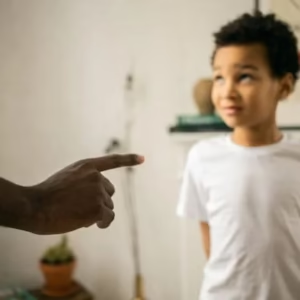One remarkable truth in the world of education is that beyond the classroom, textbooks, and lesson plans, it’s possible for teachers and students to develop and enjoy a deep bond.
I recall the deep bond I shared with some of my teachers during my basic and high school days. I confided in them, visited their homes, and even affectionately referred to some of the female teachers as “mummies.”
To me, they weren’t just my teachers; they were an integral part of my life journey who weren’t only interested in my academic progress but also invested in my personal growth.
My basic-one teacher still keeps in touch with me to this day. She followed my journey from basic school through university, offering guidance and support along the way.
In this article, we’ll discuss how teachers can foster deep, meaningful relationships and connections with their students.
And if a smile instantly lights up your face anytime you remember your teachers, please share your stories and experiences with us at the end of this article by dropping a comment. So, let’s dive in!

Practical Steps for Teachers to Build a Deep Bond with Their Students
I. Build Trust and Respect
Trust and respect are the cornerstones of a strong teacher-student relationship. It’s about creating an atmosphere where students feel safe to express themselves.
This begins with consistency and reliability. When teachers keep promises, stick to rules fairly, and treat every student with the same level of respect, trust blossoms.
II. Listen with Empathy
Listening is an art, and when teachers do it with empathy, it can transform the classroom experience.
However, listening is more than just hearing words; it’s about understanding the emotions and needs behind the spoken words.
When a teacher listens empathetically with all senses of attention and engagement, they show students that their feelings matter. It’s like saying, “I understand how you feel, and I’m here to support you,” and this fosters a sense of validation and connection.
III. Offer Personalized Guidance
Every student is unique, with their own strengths, weaknesses, and aspirations. As a teacher, recognizing this individuality is key to building a strong bond.
Personalized guidance involves taking the time to understand each student’s goals and challenges. It’s about offering tailored support and mentorship that address their specific needs.
For example, meeting with students individually to discuss their progress and goals and providing targeted feedback and support on assignments and assessments show that a teacher cares and is invested in each student’s growth and success.
IV. Celebrate the Students’ Diversity
Classrooms are wonderfully diverse, filled with students from various backgrounds, cultures, and perspectives, which, when embraced, creates an inclusive environment where all students feel valued.
Teachers can achieve this by incorporating diverse perspectives into their curriculum, encouraging discussions on cultural awareness, and encouraging an atmosphere of acceptance and belonging.
V. Encourage Open Communication
Encouraging open communication means creating a safe space where students feel comfortable sharing their thoughts, questions, and concerns.
It involves active listening, asking open-ended questions, and providing constructive feedback. When students know their voices are heard, a deeper connection is established.
VI. Inspire Lifelong Learning
Teachers have the incredible opportunity to instill curiosity and a love for knowledge that extends far beyond the classroom in their students.
This they can achieve by making lessons engaging, relevant, and inspiring. When students see the joy in learning, they’ll become eager to explore new horizons.

VII. Nurture the Students’ Emotional Well-being
Students face various emotional challenges in today’s world, and teachers can play a pivotal role in supporting their emotional well-being and mental health.
As a teacher, you should be able to recognize the signs of emotional distress, offer a listening ear, and connect your students with appropriate resources when needed.
Nurturing emotional well-being creates an environment where students feel cared for and valued.
VIII. Create Lasting Memories
Do you have special memories of your teachers? I have a lot, and they make me miss school days.
Memories are the building blocks of a meaningful educational experience, and teachers can create these memories by introducing creative and memorable activities into their lessons.
For example, I can still remember the literature teacher assigning us characters in William Shakespeare’s famous play “The Tempest” for us to not only memorize but also acquaint ourselves with the different scenes of the drama in my senior year.
So whether it’s a hands-on science experiment, a class project that involves teamwork, or a special field trip, these experiences leave a lasting impact and become moments that students cherish and remember long after they leave the classroom.
Conclusion: Strategies to Quickly and Effectively Build Stronger Bonds with Your Students
The classroom is not just a place for academic instruction; it’s also a place where profound connections can be nurtured between teachers and their students.
When students feel supported and valued by their teachers, they are more likely to be engaged in learning, achieve academic goals, and develop into well-rounded individuals
Therefore, I encourage all teachers to take the time to build strong bonds with their students. It is one of the most important things they can do to help them succeed.
Ubuntu Education: Raising a Generation of Compassionate and United Africans
Unlike traditional education, which often focuses solely on academics, Ubuntu education takes a more holistic approach.
In this article, we’ll explore how Ubuntu education is transforming the educational landscape of the African continent.












